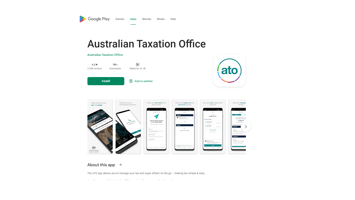If you're running a business, it's important to understand what happens if your tax debts get...
Tax Payment Plans in Australia: How to Stay Compliant and Manage Your Finances Effectively

Struggling to keep up with your tax obligations? Don’t worry, you’re not alone.
The Australian Taxation Office (ATO) offers tax payment plans that can make life a lot easier for both individuals and businesses dealing with tax debts.
These plans help you manage your payments in a way that keeps you compliant with tax laws, without causing undue financial stress.
Why don’t we walk you through everything you need to know about tax payment plans, from understanding the basics to managing your plan effectively?
Understanding Tax Payment Plans
A tax payment plan is an arrangement with the ATO that allows you to pay off your tax debt in manageable installments over a set period. This option is designed to help those who may struggle to pay their tax debt in one lump sum, ensuring that they can meet their obligations without undue financial stress. Payment plans can cover various types of taxes, including income tax, goods and services tax (GST), and pay-as-you-go (PAYG) installments.
Types of Payment Plans Available
The ATO offers several types of payment plans tailored to different needs and circumstances:
1. Self-Managed Payment PlansFor individuals and small businesses with a tax debt of up to $100,000, the ATO provides an online service through MyGov or the ATO website, where you can set up a self-managed payment plan. This option is convenient and quick, allowing you to choose payment amounts and frequencies that suit your financial situation.
2. Tailored Payment PlansFor larger debts or more complex situations, you might need a tailored payment plan. This involves contacting the ATO directly to discuss your financial circumstances and negotiate a suitable repayment arrangement. Tailored plans can accommodate varying financial conditions and ensure that the payment schedule is realistic and manageable.
3. Interest-Free Payment PlansUnder certain conditions, the ATO may offer interest-free payment plans for specific types of debt, such as those resulting from natural disasters or severe hardship. Eligibility for these plans is assessed on a case-by-case basis.
How to Apply for a Payment Plan
Applying for a tax payment plan is a straightforward process, but it’s essential to have all necessary information and documentation ready. Here’s a step-by-step guide:
1. Assess Your Financial SituationBefore applying, evaluate your financial position to determine how much you can afford to pay regularly without causing financial strain.
2. Choose the Application Method- Online: For debts up to $100,000, use the ATO’s online services via MyGov or the ATO website.
- Phone: Call the ATO on 13 11 42 to discuss and set up a payment plan.
- In Writing: If required, submit a written application outlining your financial situation and proposed payment plan.
Be prepared to provide details about your income, expenses, assets, and liabilities. This information helps the ATO assess your financial situation and agree on a manageable payment plan.
4. Agree on TermsOnce the ATO reviews your application, they will propose terms for the payment plan. Ensure you understand and agree to these terms before confirming the arrangement.
Managing Your Payment Plan
Once your payment plan is in place, it’s crucial to manage it effectively to stay compliant and avoid additional penalties:
1. Make Timely PaymentsEnsure all payments are made on time as agreed in the plan. Missing payments can result in the plan being canceled and additional penalties or interest charges being applied.
2. Monitor Your FinancesRegularly review your financial situation to ensure you can continue meeting the payment plan obligations. If your circumstances change, contact the ATO to discuss adjusting the plan.
3. Keep Communication OpenMaintain open communication with the ATO. If you anticipate any difficulties in making payments, inform the ATO immediately to explore possible solutions.
Benefits and Considerations
Benefits
1. Financial ReliefPayment plans provide a structured way to manage tax debts, easing the financial burden by spreading payments over time.
2. ComplianceStaying on a payment plan keeps you compliant with tax obligations, avoiding legal actions and additional penalties from the ATO.
3. FlexibilityPayment plans can be tailored to your financial situation, offering flexibility in terms of payment amounts and frequencies.
Considerations
1. Interest and PenaltiesWhile payment plans can include interest, it's often less than the penalties for unpaid tax. In some cases, the ATO might waive interest under hardship provisions.
2. Ongoing ObligationsYou must continue to meet ongoing tax obligations while on a payment plan. Falling behind on current tax liabilities can jeopardise your payment plan.
3. Review and AdjustRegularly review the terms of your payment plan and your financial situation. If you struggle to meet the agreed payments, contact the ATO to renegotiate terms.
Conclusion
Tax payment plans are a valuable tool for managing tax debts and staying compliant with ATO requirements.
By understanding the types of plans available, how to apply, and how to manage your plan effectively, you can alleviate financial stress and maintain good standing with the ATO.
If you need assistance or have questions about setting up a tax payment plan, contact us at 02 9411 5422. Our team of experts is here to help you navigate your options and find the best solution for your financial situation.




